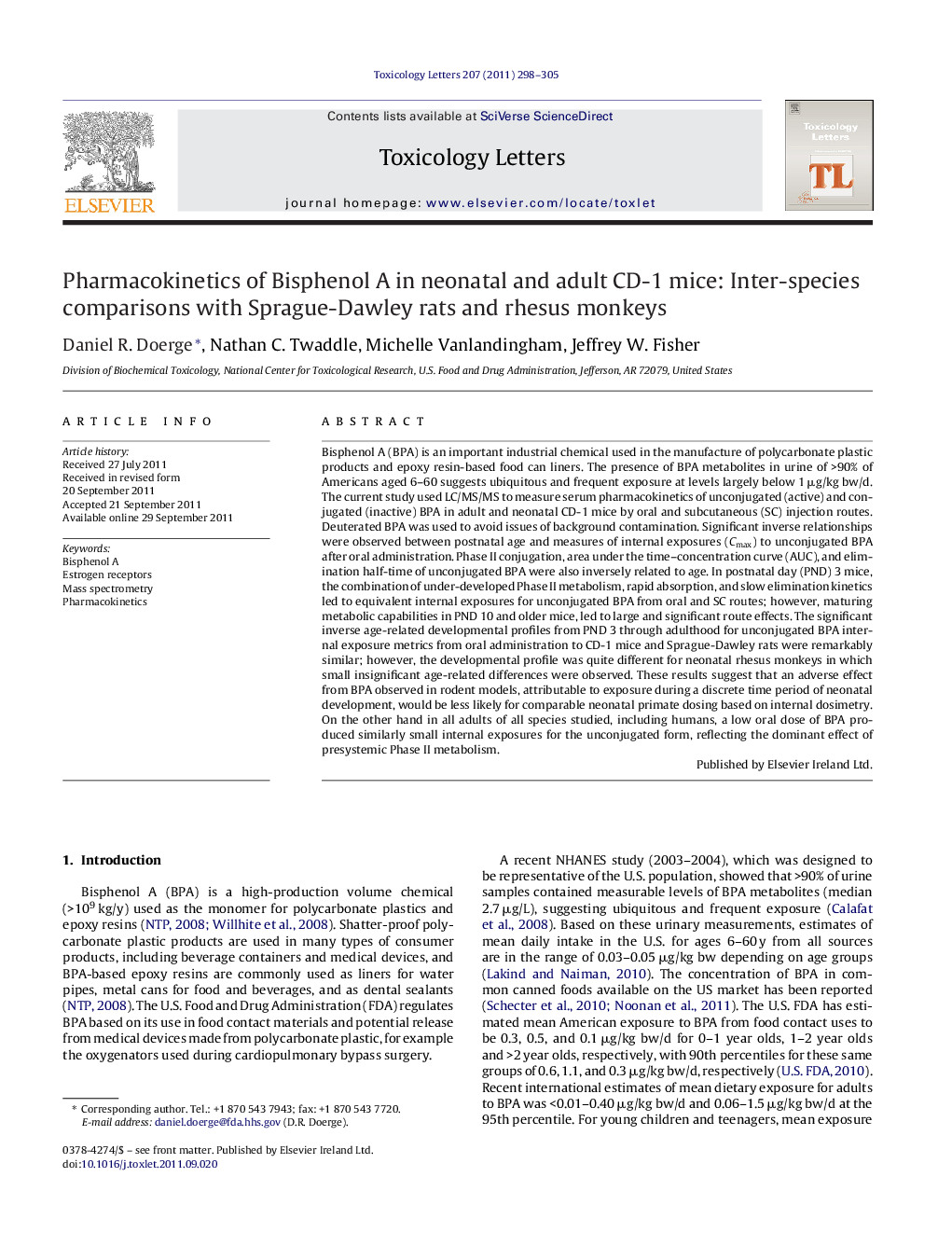| کد مقاله | کد نشریه | سال انتشار | مقاله انگلیسی | نسخه تمام متن |
|---|---|---|---|---|
| 5860837 | 1133248 | 2011 | 8 صفحه PDF | دانلود رایگان |

Bisphenol A (BPA) is an important industrial chemical used in the manufacture of polycarbonate plastic products and epoxy resin-based food can liners. The presence of BPA metabolites in urine of >90% of Americans aged 6-60 suggests ubiquitous and frequent exposure at levels largely below 1 μg/kg bw/d. The current study used LC/MS/MS to measure serum pharmacokinetics of unconjugated (active) and conjugated (inactive) BPA in adult and neonatal CD-1 mice by oral and subcutaneous (SC) injection routes. Deuterated BPA was used to avoid issues of background contamination. Significant inverse relationships were observed between postnatal age and measures of internal exposures (Cmax) to unconjugated BPA after oral administration. Phase II conjugation, area under the time-concentration curve (AUC), and elimination half-time of unconjugated BPA were also inversely related to age. In postnatal day (PND) 3 mice, the combination of under-developed Phase II metabolism, rapid absorption, and slow elimination kinetics led to equivalent internal exposures for unconjugated BPA from oral and SC routes; however, maturing metabolic capabilities in PND 10 and older mice, led to large and significant route effects. The significant inverse age-related developmental profiles from PND 3 through adulthood for unconjugated BPA internal exposure metrics from oral administration to CD-1 mice and Sprague-Dawley rats were remarkably similar; however, the developmental profile was quite different for neonatal rhesus monkeys in which small insignificant age-related differences were observed. These results suggest that an adverse effect from BPA observed in rodent models, attributable to exposure during a discrete time period of neonatal development, would be less likely for comparable neonatal primate dosing based on internal dosimetry. On the other hand in all adults of all species studied, including humans, a low oral dose of BPA produced similarly small internal exposures for the unconjugated form, reflecting the dominant effect of presystemic Phase II metabolism.
⺠Neonatal mice, like rats, show age-related changes in BPA pharmacokinetics (PK). ⺠Maturation of BPA metabolism determines PK in neonatal mice and rats. ⺠BPA PK is different in neonatal monkeys because metabolism is more mature. ⺠BPA metabolism and PK in adult mice, rats, and monkeys are similar.
Journal: Toxicology Letters - Volume 207, Issue 3, 15 December 2011, Pages 298-305